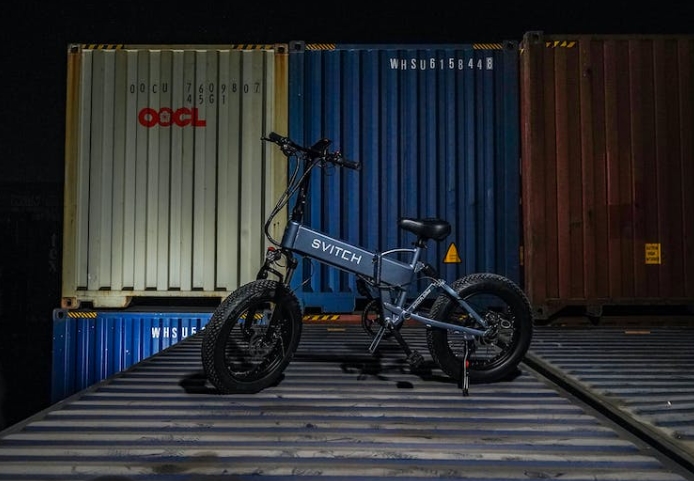The e-bike industry has transformed urban mobility, offering a sustainable, efficient, and modern mode of transportation. This surge in popularity brings forth an intriguing aspect: the manufacturers’ perspectives. Understanding the intricacies of e-bike production unveils a story of passion, innovation, and significant challenges. This exploration dives deep into the world of e-bike manufacturing, shedding light on the dedication and ingenuity behind every cycle.
The Birth of an E-Bike: Concept and Design
Ideation Process
- Brainstorming sessions in the e-bike industry often involve a blend of creative thinking and pragmatic market analysis. Manufacturers consider current technological trends, customer needs, and societal shifts toward sustainable transportation.
- Focus groups and surveys play a crucial role in capturing potential user preferences and pain points.
Design Philosophy
- The core philosophy hinges on a trinity of aesthetics, functionality, and sustainability. Designers strive to create visually appealing models that don’t compromise on performance.
- User comfort and safety are paramount, influencing choices in ergonomic design and advanced safety features.
Innovations in E-Bike Design
- Advancements in battery technology have led to longer ranges and faster charging times, enhancing user convenience.
- Smart technology integration, such as GPS tracking and performance monitoring, has been a game-changer in elevating the user experience.
The Heart of the Machine: Engineering and Production
Engineering Excellence
- The motor and battery are the heart and soul of an e-bike. Manufacturers invest in R&D to optimize these components for efficiency and longevity.
- The choice of materials plays a critical role in ensuring the bikes are both lightweight and durable, often utilizing advanced composites.
Manufacturing Process
- The journey from a blueprint to a fully assembled e-bike involves multiple stages. Precision engineering, combined with meticulous assembly, highlights the blend of automation and skilled craftsmanship.
- Quality assurance is an ongoing process, ensuring each bike meets the set standards before it leaves the factory.
Quality Control
- E-bikes undergo rigorous testing, including safety tests, performance evaluations, and long-term durability assessments.
- Adherence to global safety standards is non-negotiable, ensuring every model released is safe and reliable.
Beyond the Assembly Line: Environmental and Ethical Considerations


Sustainable Manufacturing
- Conscious efforts are made to minimize the environmental impact during production. This includes reducing energy consumption and waste.
- The use of recycled and eco-friendly materials is increasingly becoming a standard practice.
Ethical Sourcing of Materials
- Navigating the complexities of sourcing materials responsibly is a challenge. Manufacturers are focusing on building relationships with suppliers who adhere to ethical practices.
- Transparency in the supply chain is crucial for maintaining ethical standards.
E-Bike Recycling and Lifecycle Management
- Battery recycling programs are an integral part of the product lifecycle, addressing the environmental concerns of battery disposal.
- Designing e-bikes for easy disassembly aids in recycling and reduces the environmental footprint.
The Impact of Consumer Feedback
Incorporating User Experience in Design
- Consumer feedback is a valuable tool in shaping future e-bike models. It helps manufacturers understand what users truly value and need.
- Post-purchase reviews and service feedback provide real-world insights that drive iterative improvements in design and functionality.
Customer-Oriented Innovation
- Case studies highlight how specific consumer feedback led to significant design modifications, improving user experience and safety.
- Proactive customer engagement is essential for staying ahead in a competitive market.
. The Role of Reviews and Ratings
- The continuous improvement cycle is heavily influenced by customer reviews and ratings. These insights guide manufacturers in refining their models and addressing any issues promptly.
- Positive feedback not only validates the efforts but also helps in building brand loyalty and trust.
Emerging Trends and Technologies
- Anticipating Future Consumer Needs: E-bike manufacturers are actively researching market trends and consumer behavior to anticipate future demands. This foresight is crucial in developing next-generation e-bikes that align with evolving lifestyles and preferences.
- Advancements in AI and Machine Learning: The integration of artificial intelligence and machine learning is revolutionizing e-bike functionalities. From predictive maintenance to enhanced navigation systems, these technologies are set to offer smarter, more intuitive riding experiences.
The Road Ahead
- Balancing Growth with Sustainability: As the e-bike market expands, manufacturers are focusing on sustainable growth strategies. This includes eco-friendly production practices, responsible sourcing of materials, and promoting the longevity of their products.
- Navigating Regulatory Landscapes: The regulatory environment for e-bikes is continually evolving. Manufacturers must stay abreast of global standards and regulations to ensure compliance and market access, adapting their strategies accordingly.
The Vision of E-Bike Manufacturers
- Commitment to Enhancing Urban Mobility: E-bike manufacturers are committed to redefining urban transport. By offering efficient, eco-friendly alternatives to traditional vehicles, they aim to alleviate urban congestion and reduce environmental impact.
- Long-Term Goals and Aspirations: The long-term vision includes continuous innovation, expanding global reach, and playing a pivotal role in the transition towards more sustainable urban ecosystems.
Conclusion
In conclusion, the journey of e-bike manufacturing is a testament to human ingenuity and a response to the growing need for sustainable transportation solutions. From the initial concept and design to the final product, every step reflects the manufacturers’ commitment to quality, innovation, and environmental responsibility. As the industry looks towards the future, it remains focused on enhancing urban mobility, embracing new technologies, and adapting to the changing needs of consumers and the planet. This ongoing evolution of e-bike manufacturing not only marks a significant shift in transportation paradigms but also symbolizes a broader commitment to a more sustainable and efficient future for all.



